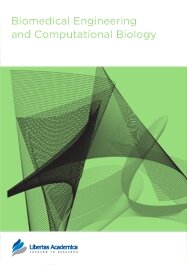

Publication Date: 03 Feb 2013
Type: Original Research
Journal: Biomedical Engineering and Computational Biology
Citation: Biomedical Engineering and Computational Biology 2013:5 1-15
doi: 10.4137/BECB.S8383

BACE1, a membrane-bound aspartyl protease that is implicated in Alzheimer’s disease, is the first protease to cut the amyloid precursor protein resulting in the generation of amyloid‑β and its aggregation to form senile plaques, a hallmark feature of the disease. Few other native BACE1 substrates have been identified despite its relatively loose substrate specificity. We report a bioinformatics approach identifying several putative BACE1 substrates. Using our algorithm, we successfully predicted the cleavage sites for 70% of known BACE1 substrates and further validated our algorithm output against substrates identified in a recent BACE1 proteomics study that also showed a 70% success rate. Having validated our approach with known substrates, we report putative cleavage recognition sequences within 962 proteins, which can be explored using in vivo methods. Approximately 900 of these proteins have not been identified or implicated as BACE1 substrates. Gene ontology cluster analysis of the putative substrates identified enrichment in proteins involved in immune system processes and in cell surface protein-protein interactions.
PDF (1.30 MB PDF FORMAT)
RIS citation (ENDNOTE, REFERENCE MANAGER, PROCITE, REFWORKS)
Supplementary Files 1 (256.00 KB XLS FORMAT)
BibTex citation (BIBDESK, LATEX)
XML
PMC HTML

I experienced rapid and fair peer review and fast article publication. The competent editorial and production staff at Libertas Academica were attentive to every detail and were great at communicating with us during the review and publication process. Thank you for your great service.
Facebook Google+ Twitter
Pinterest Tumblr YouTube